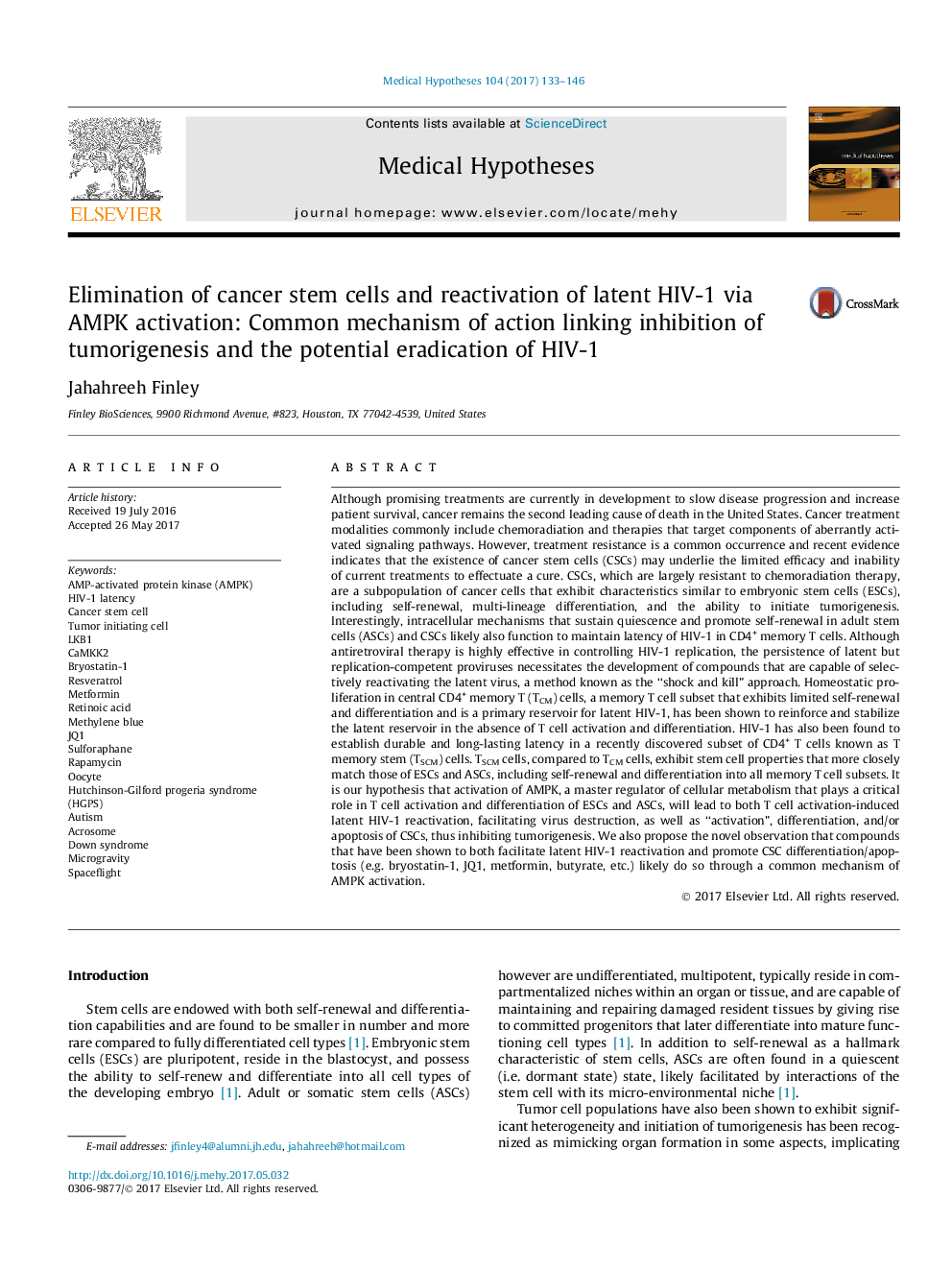| کد مقاله | کد نشریه | سال انتشار | مقاله انگلیسی | نسخه تمام متن |
|---|---|---|---|---|
| 5548548 | 1556541 | 2017 | 14 صفحه PDF | دانلود رایگان |

Although promising treatments are currently in development to slow disease progression and increase patient survival, cancer remains the second leading cause of death in the United States. Cancer treatment modalities commonly include chemoradiation and therapies that target components of aberrantly activated signaling pathways. However, treatment resistance is a common occurrence and recent evidence indicates that the existence of cancer stem cells (CSCs) may underlie the limited efficacy and inability of current treatments to effectuate a cure. CSCs, which are largely resistant to chemoradiation therapy, are a subpopulation of cancer cells that exhibit characteristics similar to embryonic stem cells (ESCs), including self-renewal, multi-lineage differentiation, and the ability to initiate tumorigenesis. Interestingly, intracellular mechanisms that sustain quiescence and promote self-renewal in adult stem cells (ASCs) and CSCs likely also function to maintain latency of HIV-1 in CD4+ memory T cells. Although antiretroviral therapy is highly effective in controlling HIV-1 replication, the persistence of latent but replication-competent proviruses necessitates the development of compounds that are capable of selectively reactivating the latent virus, a method known as the “shock and kill” approach. Homeostatic proliferation in central CD4+ memory T (TCM) cells, a memory T cell subset that exhibits limited self-renewal and differentiation and is a primary reservoir for latent HIV-1, has been shown to reinforce and stabilize the latent reservoir in the absence of T cell activation and differentiation. HIV-1 has also been found to establish durable and long-lasting latency in a recently discovered subset of CD4+ T cells known as T memory stem (TSCM) cells. TSCM cells, compared to TCM cells, exhibit stem cell properties that more closely match those of ESCs and ASCs, including self-renewal and differentiation into all memory T cell subsets. It is our hypothesis that activation of AMPK, a master regulator of cellular metabolism that plays a critical role in T cell activation and differentiation of ESCs and ASCs, will lead to both T cell activation-induced latent HIV-1 reactivation, facilitating virus destruction, as well as “activation”, differentiation, and/or apoptosis of CSCs, thus inhibiting tumorigenesis. We also propose the novel observation that compounds that have been shown to both facilitate latent HIV-1 reactivation and promote CSC differentiation/apoptosis (e.g. bryostatin-1, JQ1, metformin, butyrate, etc.) likely do so through a common mechanism of AMPK activation.
Journal: Medical Hypotheses - Volume 104, July 2017, Pages 133-146